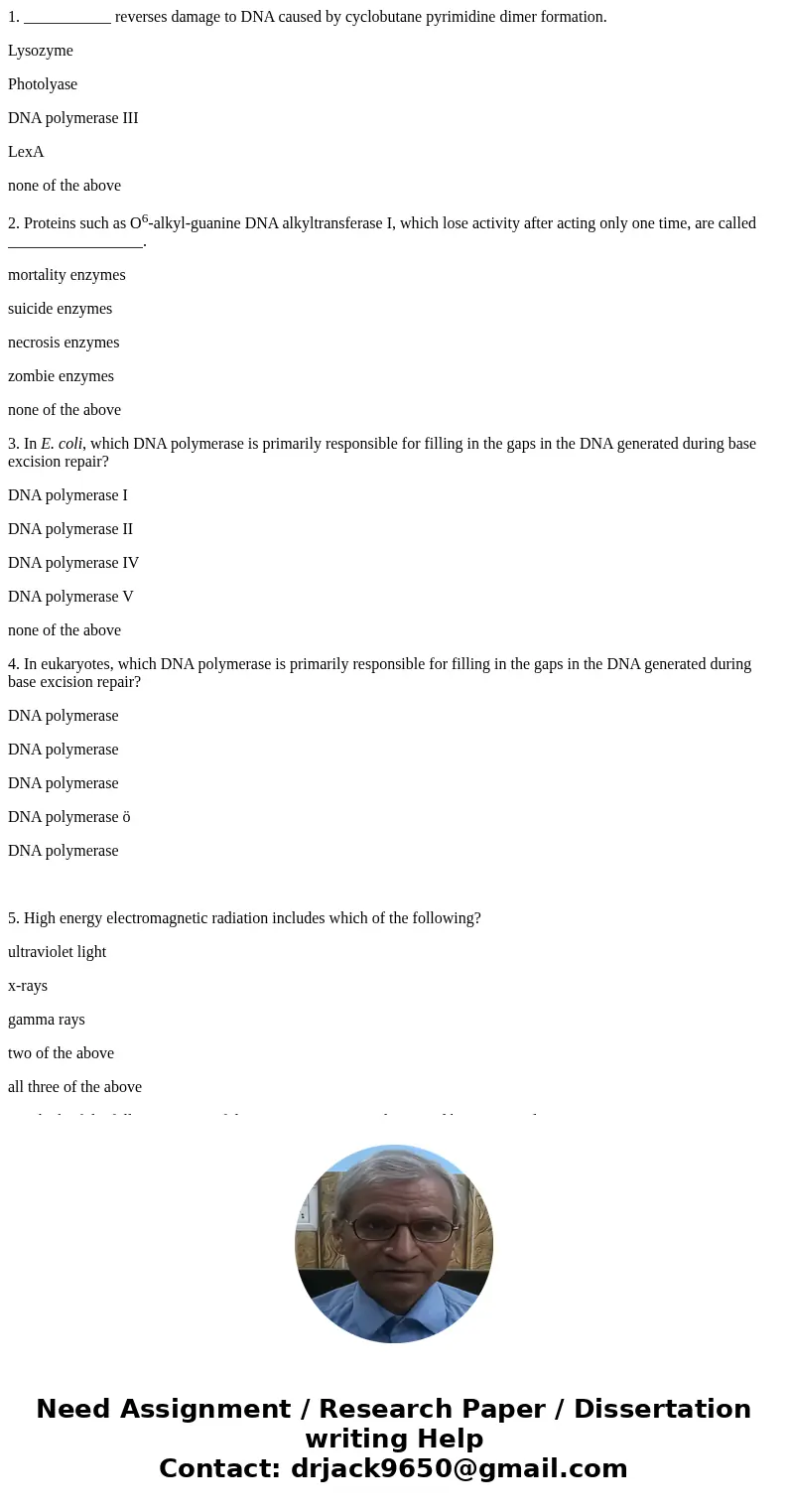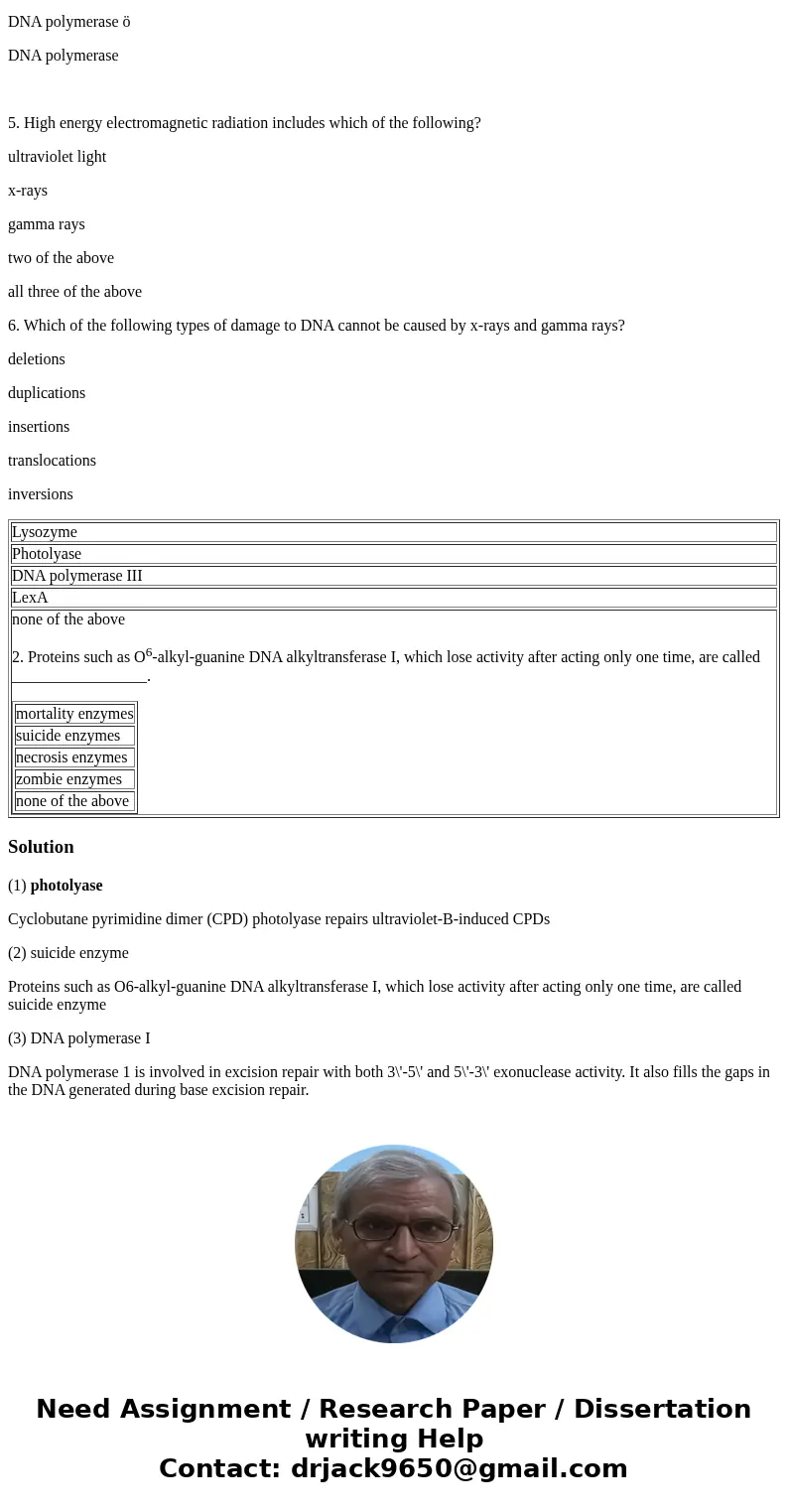1 reverses damage to DNA caused by cyclobutane pyrimidine d
1. ___________ reverses damage to DNA caused by cyclobutane pyrimidine dimer formation.
Lysozyme
Photolyase
DNA polymerase III
LexA
none of the above
2. Proteins such as O6-alkyl-guanine DNA alkyltransferase I, which lose activity after acting only one time, are called _________________.
mortality enzymes
suicide enzymes
necrosis enzymes
zombie enzymes
none of the above
3. In E. coli, which DNA polymerase is primarily responsible for filling in the gaps in the DNA generated during base excision repair?
DNA polymerase I
DNA polymerase II
DNA polymerase IV
DNA polymerase V
none of the above
4. In eukaryotes, which DNA polymerase is primarily responsible for filling in the gaps in the DNA generated during base excision repair?
DNA polymerase
DNA polymerase
DNA polymerase
DNA polymerase ö
DNA polymerase
5. High energy electromagnetic radiation includes which of the following?
ultraviolet light
x-rays
gamma rays
two of the above
all three of the above
6. Which of the following types of damage to DNA cannot be caused by x-rays and gamma rays?
deletions
duplications
insertions
translocations
inversions
| Lysozyme | |||||
| Photolyase | |||||
| DNA polymerase III | |||||
| LexA | |||||
| none of the above 2. Proteins such as O6-alkyl-guanine DNA alkyltransferase I, which lose activity after acting only one time, are called _________________.
|
Solution
(1) photolyase
Cyclobutane pyrimidine dimer (CPD) photolyase repairs ultraviolet-B-induced CPDs
(2) suicide enzyme
Proteins such as O6-alkyl-guanine DNA alkyltransferase I, which lose activity after acting only one time, are called suicide enzyme
(3) DNA polymerase I
DNA polymerase 1 is involved in excision repair with both 3\'-5\' and 5\'-3\' exonuclease activity. It also fills the gaps in the DNA generated during base excision repair.


 Homework Sourse
Homework Sourse